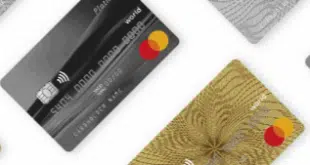Visa Inc. in October will double the current $25 purchase limit in its Visa Easy Payment Service to $50 under which no signature or PIN entry will be required for credit and debit card transactions at grocery and discount stores. The network also is changing some chargeback procedures that it says will reduce hassles for merchants.
In addition, Visa aims to help merchants speed transactions by exempting them from giving customers a receipt for small transactions unless requested.
The network said it might expand the new $50 floor limit to more merchant categories after it evaluates initial reaction from discount stores and supermarkets, their customers, and card issuers. About 80% of Visa’s U.S. face-to-face transactions are under $50. “Visa is always looking for ways to help our merchant and financial-institution partners to better serve their customers and grow their respective businesses,” a Visa spokesperson tells Digital Transactions News by e-mail. “The two changes we announced today are designed to do just that.”
Visa, MasterCard Inc., Discover Financial Services, and American Express Co. all have permitted no-signature floor limits for low-risk, card-present transactions under $25 from certain merchant categories since at least 2008. Visa says the current program has been available to the majority of its merchants since 2010, and that merchants asked to have the floor limit boosted to $50.
Regarding potentially higher risk because of fewer authenticated transactions, the spokesperson says, “Visa does not anticipate any material increase in fraud losses as a result of this change. Currently, the fraud experienced in card-present, authorized transactions in the Visa Easy Payment Service is very low. And fraud is also low in the two selected merchant categories for transactions $25 to $50.”
The floor-limit expansion could give Visa at least a temporary boost in merchant popularity. That in turn might mitigate the overall slow growth in its debit business and the outright decline in volume on its Interlink PIN-debit network as a result of new regulations resulting from the Durbin Amendment in 2010’s Dodd-Frank Act. One part of the amendment outlawed exclusive arrangements between card issuers and networks, a niche Visa dominated, which beginning April 1 resulted in a boost to other PIN-debit networks at Interlink’s expense. “In an environment where merchants have greater choice over which network to route debit transactions, Visa recognizes the need to continually enhance our merchant offerings to win routing decisions,” the spokesperson says.
The higher floor limits also will help pave the way for fast payment transactions once EMV chip cards and mobile payments take hold in the United States, says Rick Oglesby, a senior analyst at Boston-based Aite Group LLC. “They’re trying to make things a little bit more user-friendly, a quicker point-of-sale transaction,” he says.
Meanwhile, Visa said that, beginning in April 2013, merchants will be protected from fraud chargebacks on transactions that have been electronically read by a magnetic-stripe or chip card reader. The network didn’t reveal much detail about what will be different, but the spokesperson said the changes would make the chargeback-resolution process “more efficient.” The spokesperson says chargebacks currently represent only 0.036% of Visa’s U.S. volume.
Visa also will eliminate the requirement for its card issuers to ask merchants for a copy of the receipt when a cardholder disputes a transaction, which it said will result in operational savings for everyone. There will be no change to existing fraud liability associated with the changes, Visa said.
Julie Conroy McNelley, another senior analyst at Aite Group, says the chargeback changes appear to be an effort by Visa, now a publicly held company, to reach out to merchants, which form one of its two major customer bases, the other being the financial institutions that formerly owned the company. “I think they recognized the need to be more user-friendly from a merchant viewpoint,” she says.




